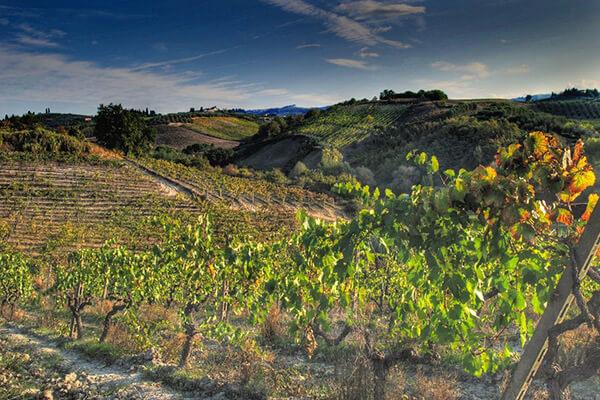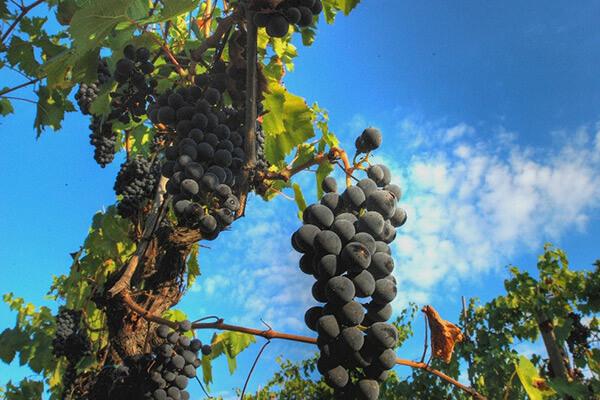
One of the most famous Italian wines, Chianti PDO is known across the globe. Paired with a simple tomato pasta dish – or perhaps even some liver and fava beans – its intense aroma tends to reach a more notable finesse at the ageing stage.
The tint of Chianti PDO is bright ruby red and tends to develop into darker garnet tones with age. Its dry and harmonious taste matures over time to a soft velvety flavour.
Origins
Chianti PDO comes from the Italian region of Tuscany, where vines have always been part of its landscape. For example, fossilised vines dating from ten million years ago have been found in the region.
The first signs of viticulture in this region can be traced back to the 8th Century, during the Etruscan period (8th to 3rd century BCE). Already back then, Tuscan wine was valued outside of the region, being exported to southern Italy and Gaul (most of what would become France).
Chianti PDO in particular slowly established itself from the early Middle Ages. Hills between the cities of Florence and Siena were known as the Chianti Mountains. This specific area was known for its winemaking and led to the three main villages of this area (Castellina, Gaiole and Radda) to form the Lega del Chianti (League of Chianti).
In 1716, its first legal recognition was established by Cosimo III de Medici, Grand Duke of Tuscany, who laid down that Chianti, the wine name, could only be used by producers from the villages of the Lega del Chianti, Greve and its surroundings.
Since then, the delimited area for production of Chianti PDO has gradually grown to include today a significant part of Central Tuscany, which comprises the Provinces of Arezzo, Florence, Prato, Pistoia, Pisa and Siena. This area was legally recognised for Chianti PDO when it was granted the Italian Controlled Designation of Origin (DOC) on 9 August 1967.
Production
Chianti PDO’s specificity is linked with the climatic and geological characteristics existing in the region. The ideal conditions for vine growing are achieved thanks to a warm Mediterranean climate coming from the Tyrrhenian Sea, with temperatures tempered by the rolling hills. The altitude allows the grapes to maintain a balance in sugar and acidity due to a high fluctuation in temperature that takes place throughout the day.
The varieties of vines used to produce Chianti PDO are in majority traditionally grown in the region. For example, Sangiovese N is the main variety used to produce Chianti, and should compose 70 to 100% of the grapes.
Vines used to produce Chianti PDO cannot be grown above 700 metres above sea level and are, on average, grown between 200 and 400 metres above sea level. As for vine growing, no particular limitations exist as long as the special characteristics of the grape and the vine are not affected. Horizontal growing is strictly forbidden however.
Today various types of Chianti PDO exist, with different ageing methods or different compositions of grapes, with for example Chianti Superiore or Chianti Riserva. Nonetheless, they all need to be produced in the delimited region of origin with grapes from that area.
More information
Chianti PDO – legal specifications


